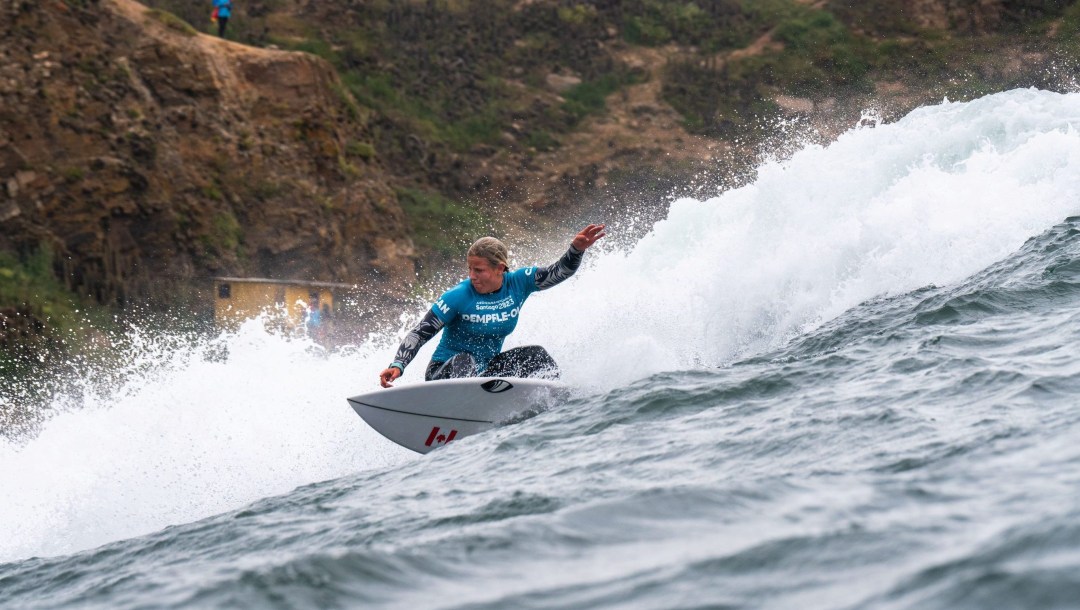Surfing 101 with Sanoa Dempfle-Olin
The sport of surfing made its Olympic debut at Tokyo 2020, but since no Canadians competed there, some Team Canada fans might still be learning the ins and outs of Olympic surfing.
To give us a crash course in Surfing 101, we enlisted the help of Canada’s Paris 2024-bound surfer, Sanoa Dempfle-Olin, who qualified for the upcoming Olympic Games at the Santiago 2023 Pan Am Games this past fall.
The 18-year-old went home to her surf-loving town of Tofino, B.C. with a silver medal, her ticket to Paris, and the potential to expose the rest of Canada to the wonders of surfing.
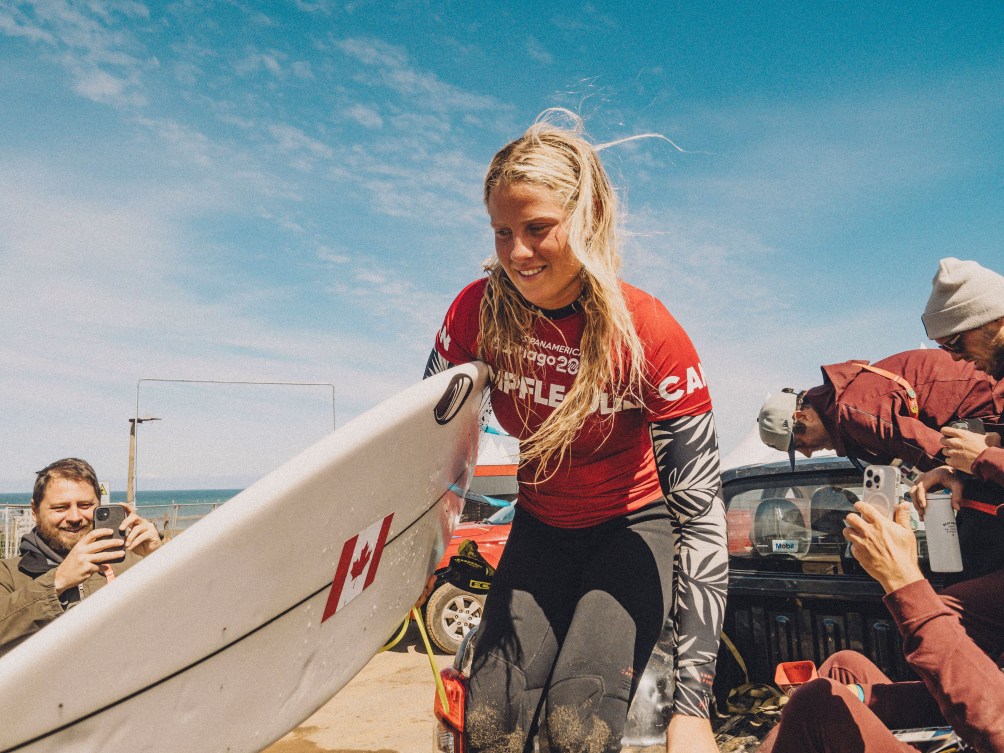
How do international surfing competitions work?
“The basic thing to know is that surfers are scored on their two best waves. They’re scored on a scale from 1 to 10, with 10 being the best that you get. And then I guess a 0.1 would be the worst you could get,” Dempfle-Olin says with a chuckle.
“Our two best waves added together as our heat score total and whichever surfer has the higher total wins the heat.”
The typical International Surfing Association (ISA) format involves four-person heats. The top two surfers of each heat advance to the main round, while the other two surfers go into the repechage. In the main round, the top two surfers of each heat keep advancing. In the repechage, surfers who finish in the top two advance to the next repechage round, while the other surfers are eliminated from competition.
The competition format for the Olympic Games differs from that.
Competition will begin with a first round in which 24 athletes are seeded into eight heats of three athletes. The winner of each heat advances directly to the third round, while the second and third place athletes advance to round two. No surfers are eliminated in the first round of competition.
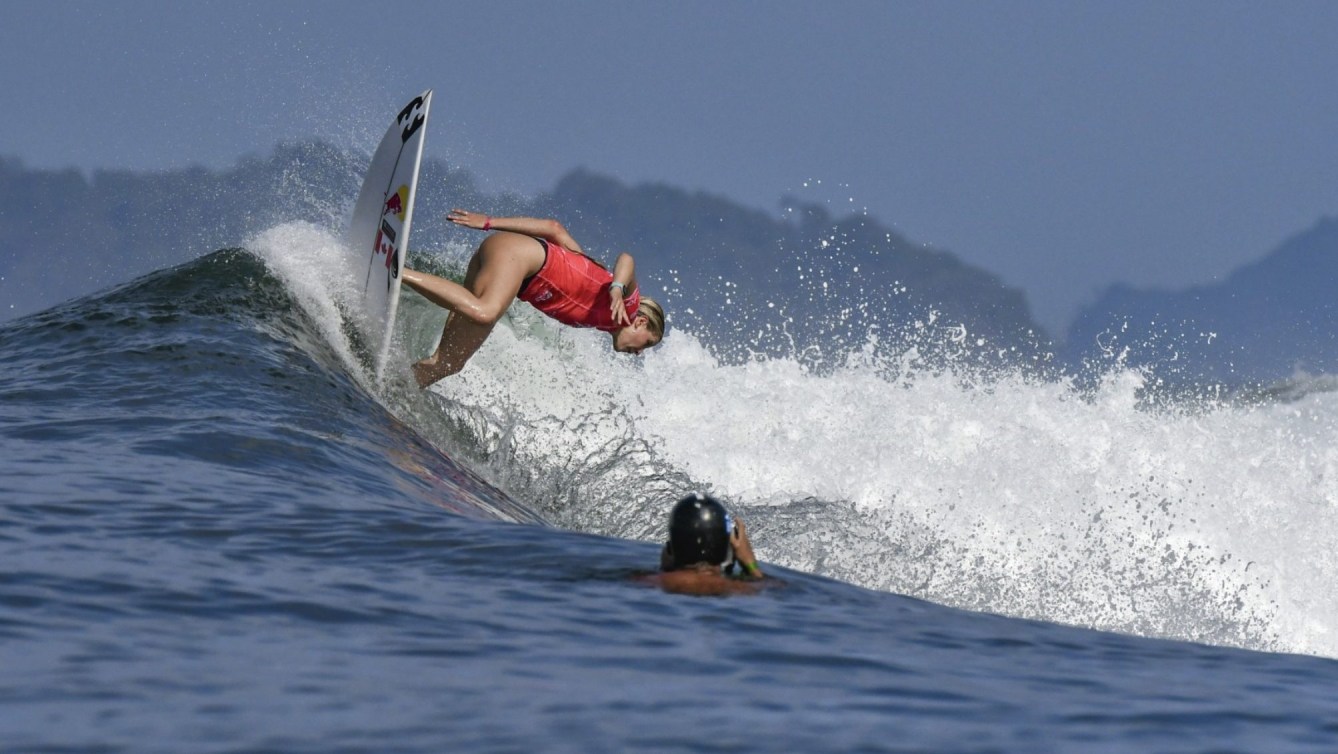
Starting in round two, another eight heats will take place, this time consisting of only two surfers per heat. The losing athlete from each heat will be eliminated, while the winner will advance to the third round. Round three is in the same format, with the winner of each heat advancing to the quarterfinals, while the losing surfers will be eliminated.
The quarterfinals will consist of four heats of two athletes. Winners advance to the semifinals and losing surfers will be eliminated. The semifinals will have two heats of two athletes. The semifinal winners will advance to the gold medal heat, while the losing surfers will compete in the bronze medal heat.
Only one surfer is allowed to ride a wave at a given time. When a heat starts, the surfer who is the closest to the peak of a wave has the right of way, and then a priority rotation is established. Surfers can receive penalties for interfering with a competitor’s ability to surf a wave.
Heats will last 25-40 minutes, the specific length determined by the technical officials, based on the wave and swell conditions.
What are surfing judges looking for?
Newer surfing fans fear not–Dempfle-Olin says that the scoring sounds more confusing than it is. The best way to get familiar is just to watch several heats to get a feel for the manoeuvres that receive higher scores.
“In competition the criteria for surfing is speed, power and flow,” Dempfle-Olin explains. “And then they’re looking to see what manoeuvres you’re doing. So if you see someone do a turn and a bunch of water goes flying and they throw a bunch of spray, that’s a sign of speed and power. And if their board changes direction, going completely to the left and then going completely to the right–that big change of direction is critical.
“If a surfer’s fins are free of the water, if they go above the wave, that’s all taken into consideration when scoring. For a wave like Teahupo’o in Tahiti, the judges will score barrels a lot, which is when you go inside of the wave and the wave folds over top of you. Within that, the scoring is based on how big the wave is and how long you’re in the barrel for or how deep in the barrel that you are.
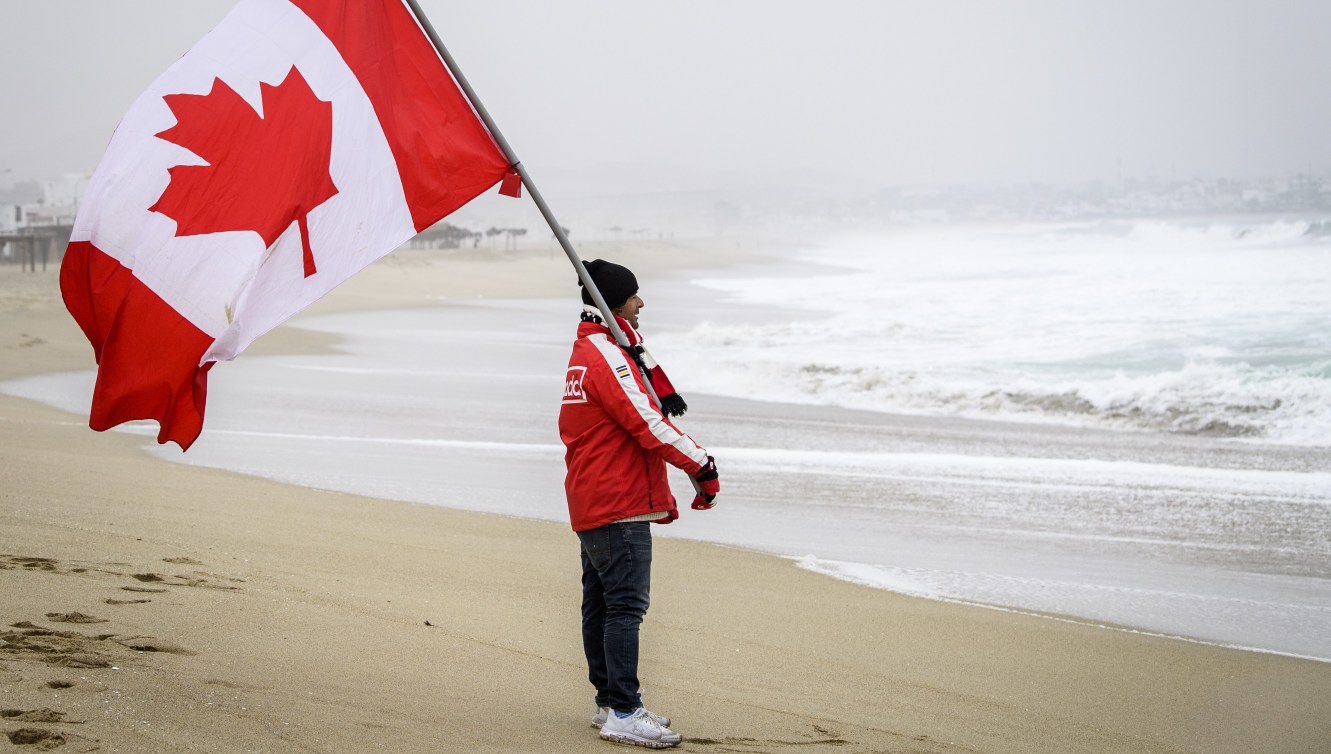
It definitely sounds confusing, but once you watch it, it makes more sense!”
Surfers that take bigger risks will be rewarded. A surfer that incorporates a variety of innovative and progressive manoeuvres, combined with a high degree of risk, will receive a greater score than a surfer who performs a large number of low risk, repetitive manoeuvres.
What equipment is used in Olympic surfing?
At the Olympic Games, surfing features shortboard competitions for men and women. Typically six to seven feet long (depending on the rider), shortboards are smaller and lighter weight than longboards (which are usually around nine feet long), allowing surfers more manoeuvrability. Shortboards have three fins and a pointy shape.
Other than one’s surfboard, gear can be dependent on weather, climate, and athlete preference.
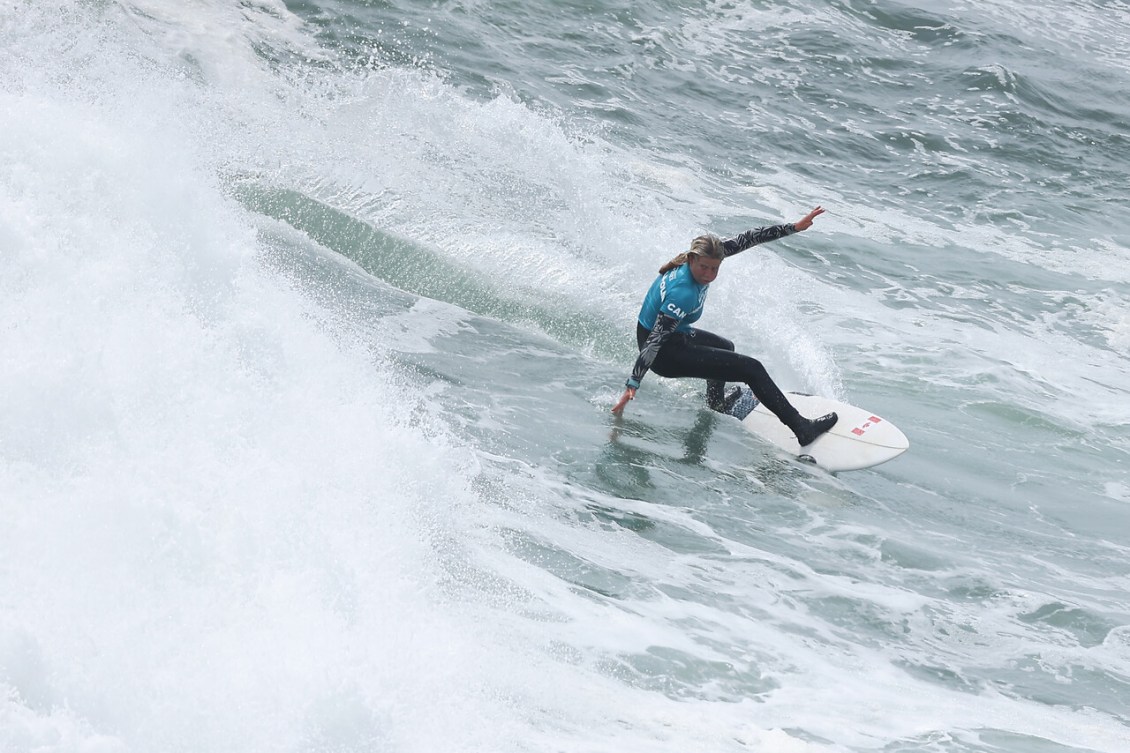
“I’m used to surfing in a wetsuit, boots and gloves, in the hood in the winter, which, you know, for people who aren’t used to that, surfing in a wetsuit feels really weird for them,” says Dempfle-Olin, who grew up surfing off the west coast of Vancouver Island.
“For me, surfing in a more tropical place can feel a little weird. I’m used to having a wetsuit on and I feel like it makes me almost feel safer. It’s more what I’m used to, but I do travel to warm places often for surfing, so now I’m pretty indifferent whether I’m in a wetsuit or not.”
What about unpredictable conditions in surfing?
Surfers mostly have to take whatever conditions Mother Nature hands to them. However, there are always contingency plans in place if the competition needs to be delayed because of unsafe conditions.
“It’s just kind of a part of surfing that it’s really unpredictable and you kind of have to prepare for everything,” Dempfle-Olin says. “Obviously wind will affect the waves, and then the swell makes a big difference, including the direction it’s coming from or how big it is, or how far out or local the swell is coming from.
“You can look into the forecast and try and predict a little bit, but pretty much you just have to be ready for everything.”
What will the surfing competition look like at Paris 2024?
Surfing at the Paris 2024 Olympic Games will take place on the other side of the globe from the French capital city, in Teahupo’o, Tahiti. It’s scheduled for early in the Games, Days 1-4 on July 27-30.
Despite being more of a tropical environment than Dempfle-Olin’s hometown waves, the Canadian says that Teahupo’o does offer some advantages for her: “I’m a goofy footer, which means that I’m frontside at Teahupo’o because it’s a left. So that definitely plays into my strength, personally.”
She has been lucky enough to visit Tahiti to test out the conditions.
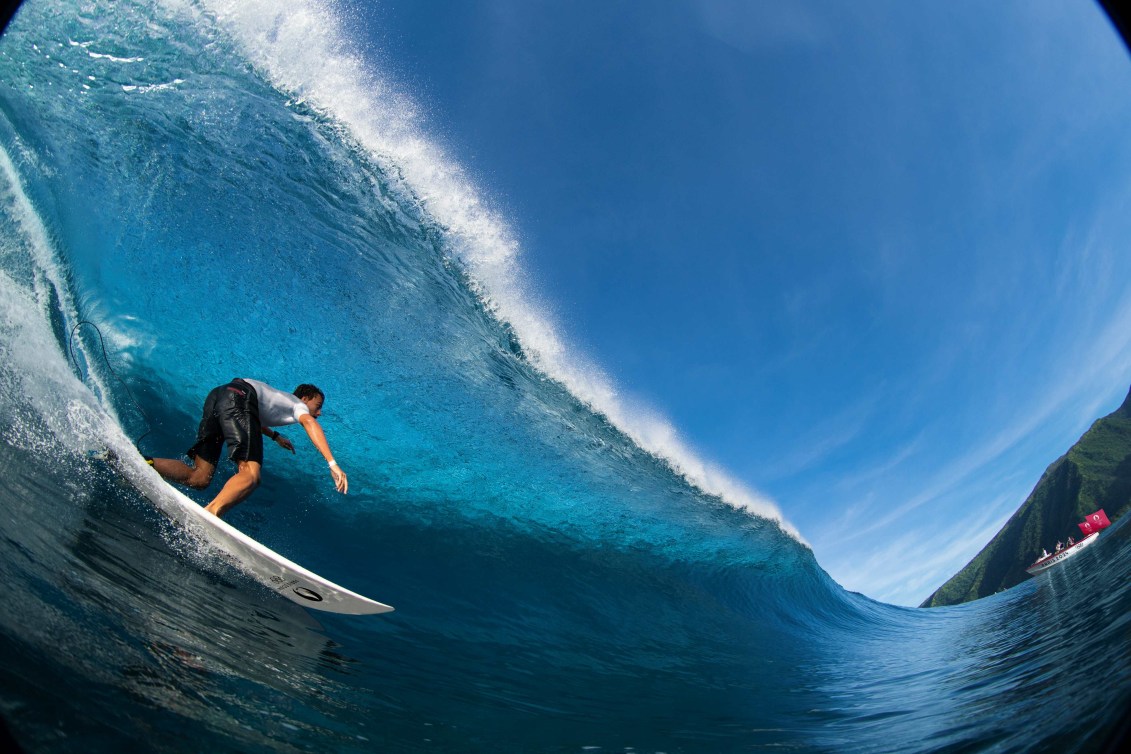
“It can be big and scary, but it’s also a really fun wave. It’s definitely unlike any waves that we have in Tofino. But if you ask any surfer about their dream wave, they’d probably say a frontside tube in a tropical environment, which is what Teahupo’o is for me.”
The wave is over a shallow reef, which Dempfle-Olin says creates more opportunity for barrels, whereas they were fewer and farther between at the Pan American Games in Santiago.
What’s on for Canadian surfers on the road to Paris?
The ISA World Surfing Games are taking place February 23-March 3 in La Marginal – Arecibo, Puerto Rico.
Canada will be represented by six surfers, including Dempfle-Olin, as well as her older sister, Mathea Dempfle-Olin, who won a bronze medal for Team Canada at the Lima 2019 Pan Am Games in the longboard event.
Cody Young will also represent Canada. He came just one win shy of advancing to the medal round at Santiago 2023.
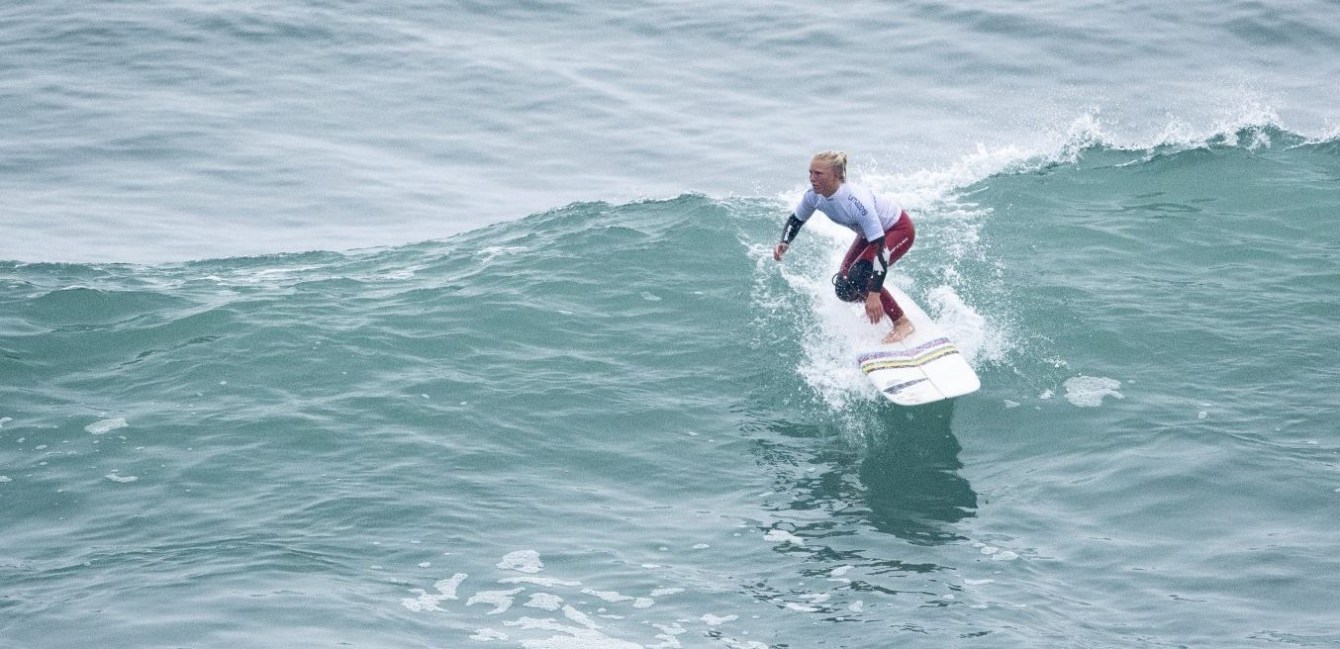
Another athlete to look out for is 16-year-old Erin Brooks. Last June, when she was just 15, Brooks won shortboard silver at the 2023 World Surfing Games in El Sunzal, El Salvador. She was unable to compete at the Pan Am Games, where Dempfle-Olin snagged an Olympic spot for Canada, because she didn’t yet hold a Canadian passport. But a proud and happy Brooks was granted Canadian citizenship in January.
The ISA World Surfing Games will serve as the last opportunity to qualify for the Paris 2024 Olympic Games.

